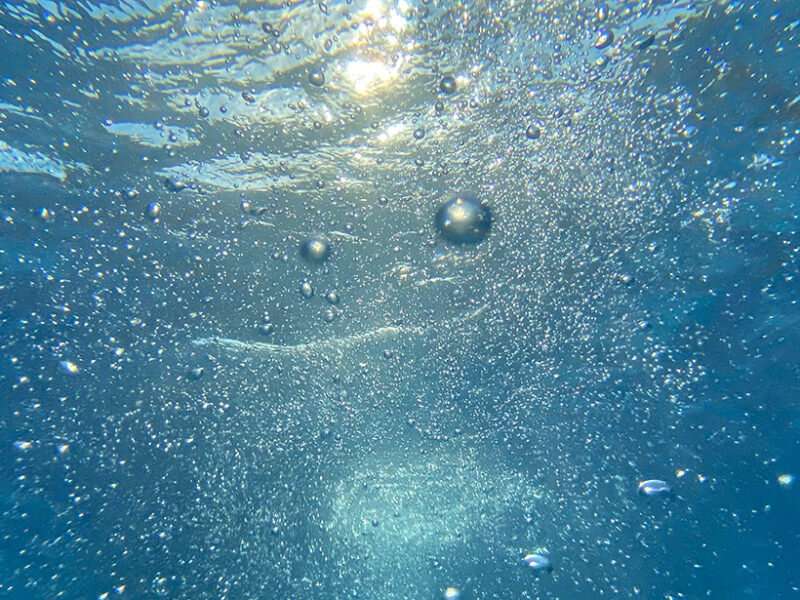Tracking oxygen in the Sargasso Sea's 18-degree water
Off the eastern coast of the United States in the Sargasso Sea, the Gulf Stream and its associated ocean currents create a thick, homogeneous layer of water that stays around 18°C year-round. Since its discovery in the late 1950s, this so-called 18 Degree Water has served as a testing ground for numerous studies of nutrient, carbon, and oxygen concentrations; biology; ocean mixing; and physics. In particular, the interplay between oxygen and carbon cycles in this layer of water has captured the attention of oceanographers as they attempt to map the flux of chemicals and energy for the entire Earth system.
In a new study, Billheimer et al. use data from biogeochemical floats in the northern Sargasso Sea to look at a core concept: the rate of remineralization, which is the speed at which organic molecules that include carbon and oxygen are converted into inorganic forms. Remineralization governs the amount of nutrients available to photosynthetic algae and thus weighs heavily in the carbon cycle. Remineralization, which varies with depth and with the seasons, is measured by oxygen usage and is linked to the maximum amount of particulate organic carbon that is produced in the surface layer and sinks through the water each year. The consistency of 18 Degree Water offers a useful natural laboratory to investigate these dynamics, especially during summer and fall, when the water layer is isolated from the atmosphere.
The new research offers a comprehensive picture of oxygen structure and usage in the northern Sargasso Sea. Using oxygen changes measured by the floats, the authors calculated that the study area is a net producer of fixed carbon and is responsible for exporting 2.9 moles of carbon per square meter per year from the upper 150–250 meters of the water column.
In addition, researchers discovered that remineralization is twice as high in May–August as it is in August–November. Oxygen increases in a layer near the surface from spring through fall because of photosynthesis; a much warmer layer at the sea surface keeps oxygen from outgassing. Oxygen is used up quickly in the layer just below this warm layer, driving the oxygen down. Beneath this layer, into the thick 18 Degree Water layer, oxygen usage rate decays with depth. According to the authors, the oxygen rate of change by itself underestimates the net production and remineralization in the top 150 meters of the ocean because of vertical mixing between the net oxygen production and oxygen usage layers.
More information: Samuel Billheimer et al. Oxygen Seasonality, Utilization Rate, and Impacts of Vertical Mixing in the Eighteen Degree Water Region of the Sargasso Sea as Observed by Profiling Biogeochemical Floats, Global Biogeochemical Cycles (2021). DOI: 10.1029/2020GB006824
Journal information: Global Biogeochemical Cycles
Provided by Eos
This story is republished courtesy of Eos, hosted by the American Geophysical Union. Read the original story here.



















